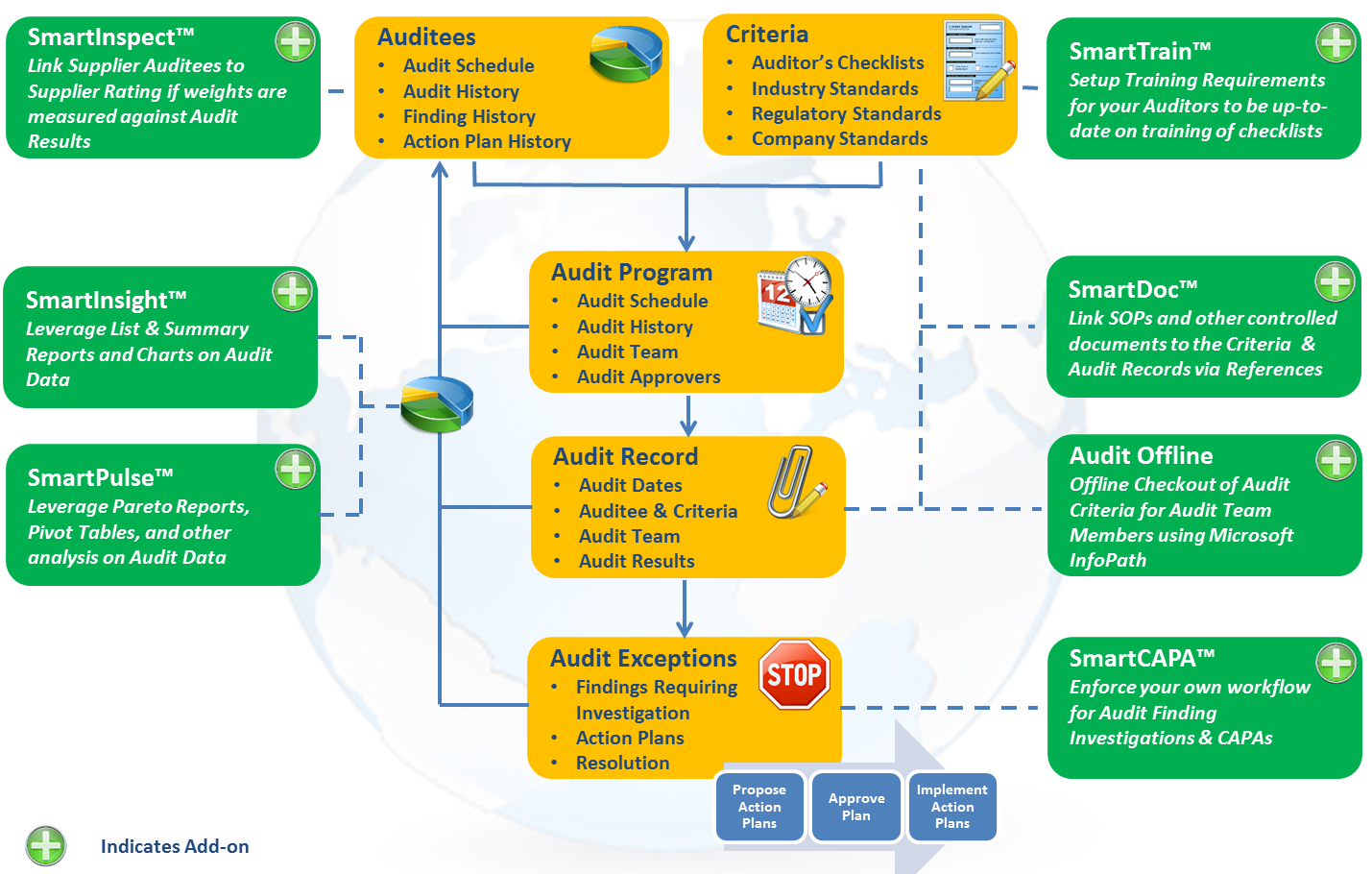
Object |
Shared with other SmartSolve© Applications |
Required for SmartAuditTM |
|
Yes |
Yes |
|
|
Yes |
Yes |
|
|
Yes |
Yes |
|
|
Yes |
No |
|
|
Yes |
No |
|
|
Yes |
No |
|
|
Yes |
No |
Object |
Shared with other SmartSolve© Applications |
Required for SmartAuditTM |
|
Yes |
Yes |
|
|
Yes |
Yes |
|
|
Yes |
Yes |
|
|
Yes |
No |
Object |
Shared with other SmartSolve© Applications |
Required for SmartAuditTM |
|
Yes |
No |
|
|
Yes |
No |
Object |
Shared with other SmartSolve© Applications |
Required for SmartAuditTM |
|
No |
No |
|
|
Yes |
Yes |
|
|
No |
Yes |
|
|
No |
No |
|
|
Yes |
No |
|
|
Yes |
No |
|
|
Yes |
No |
|
|
Yes |
No |
|
|
No |
No |
|
|
No |
No |
|
|
No |
Read Only |
|
|
No |
No |
Object |
Shared with other SmartSolve© Applications |
Required for SmartAuditTM |
|
No |
Yes |
|
|
Yes |
Yes |
|
|
No |
Yes |
|
|
No |
Yes |
|
|
No |
Yes |
|
|
No |
Yes |
|
|
Yes |
Yes |
|
|
Yes |
Yes |
|
|
No |
No |
|
|
No |
Yes |
|
|
No |
Yes |
|
|
No |
Yes |
|
|
No |
Yes |
|
|
No |
No |
|
|
No |
No |
Object |
Shared with other SmartSolve© Applications |
Required for SmartAuditTM |
|
Yes |
Yes |
|
|
Yes |
Yes |
|
|
Yes |
Yes |
|
|
Yes |
No |
|
|
Yes |
No |
|
|
Yes |
Yes |
|
|
No |
Yes |
|
|
No |
No |
|
|
No |
No |
|
|
No |
No |
As an administrator it is important to become familiar with the various setup and policy tables available off the shelf with SmartAuditTM.
Please see the SmartAuditTM End User Guide for more information on SmartAuditTM end user functions and how to maintain end user records once the system is configured.
Prior to configuring the SmartAuditTM system, meet with the key stakeholders of SmartAuditTM. You should discuss exactly what business requirements must be met in the system. Discuss who is responsible for these requirements, and the standards for the completed requirements.
This common practice is not only needed to configure the SmartAuditTM system successfully; but also helps Pilgrim customers to revisit their business processes and work to ensure that these processes are effective and efficient (continually improved to ensure processes use the least amount of resources).
Some important things to consider when implementing SmartAuditTM:
· Start with one simple audit model (i.e., internal audits) and build your configurations from this one scenario. Then you can pull in the rest of your scenarios after testing them to see if these configurations will work. Trying to do everything at one time causes proven delays in your implementation so keep it simple!
· How many other SmartSolve systems will, or have already been implemented within your organization?
If any other systems have been implemented, obtain a copy of the Software Requirements Specification (configuration documentation) and refer to this documentation. Also, collaborate with other SmartSolve administrators about how these other SmartSolve systems were configured.
· It is important when process mapping to try not to figure out what is going to go where in the SmartAuditTM system. First make sure the business requirements are clearly illustrated.
Map out an audit process flow (i.e., Internal Process Audits) and discuss the following:
· Define the types of auditees (org units and operations) who will be scheduled for or included in these types of audits.
· Identify all auditor criteria (internal and regulatory) which will be used within these types of audits.
· Determine if your auditors will use the Online Audit Checkout or if you will purchase the Offline Audit Checkout option.
· Map out the process for scheduling the audit and performing and responding to audit findings (who will own the audit records and oversee the audits throughout their life cycles).
· Determine which types of reviews (approvals) will be performed within your audit workflow.
· Illustrate the different steps performed by various user roles to record the audit, perform the audit and resolve the exceptions (audit findings).
· Determine how audit records (auditees, programs, criteria, audits, and audit exceptions) will be looked up (Adanced searches) and how information will be analyzed through reports (queries), etc.

